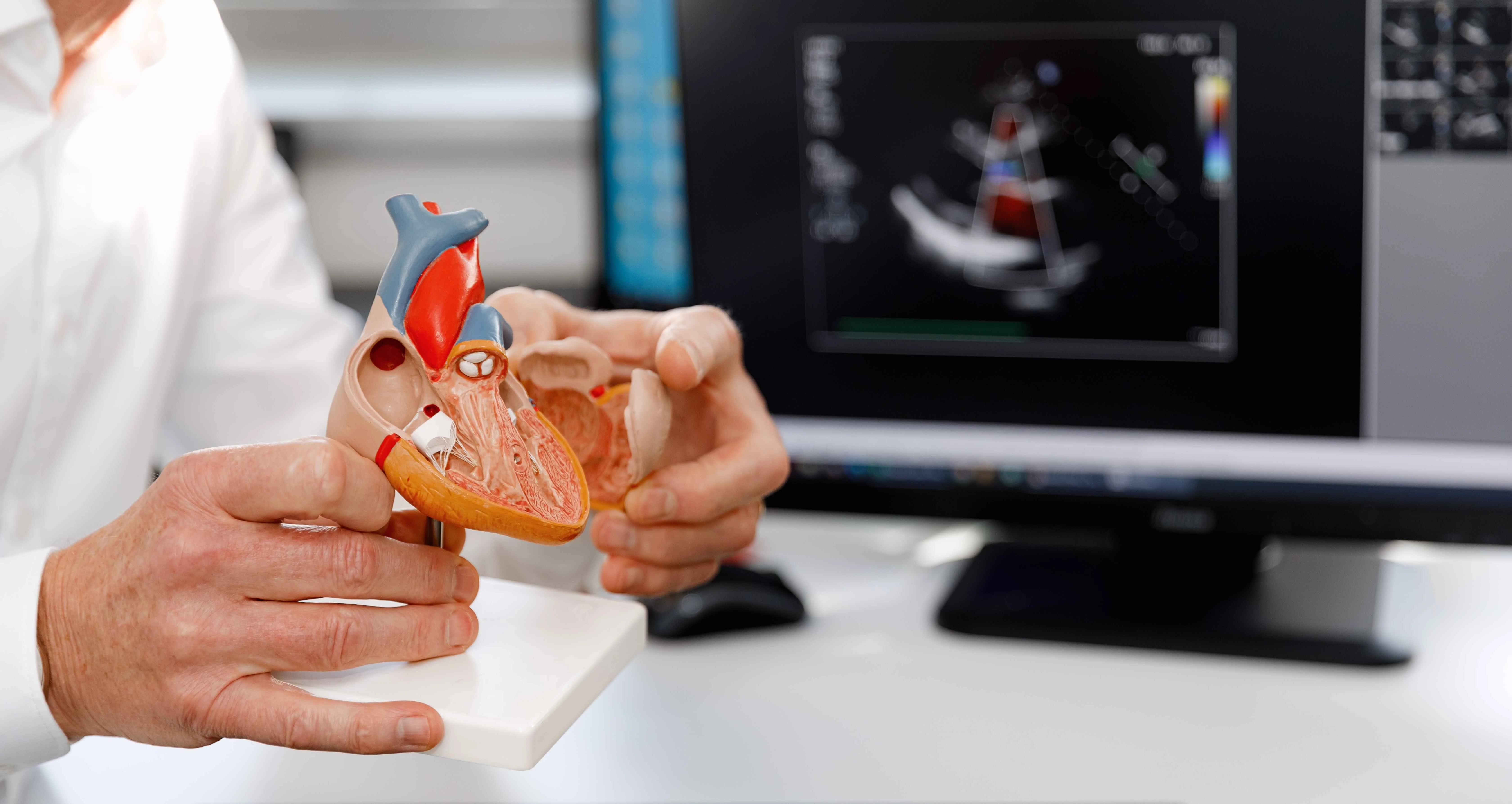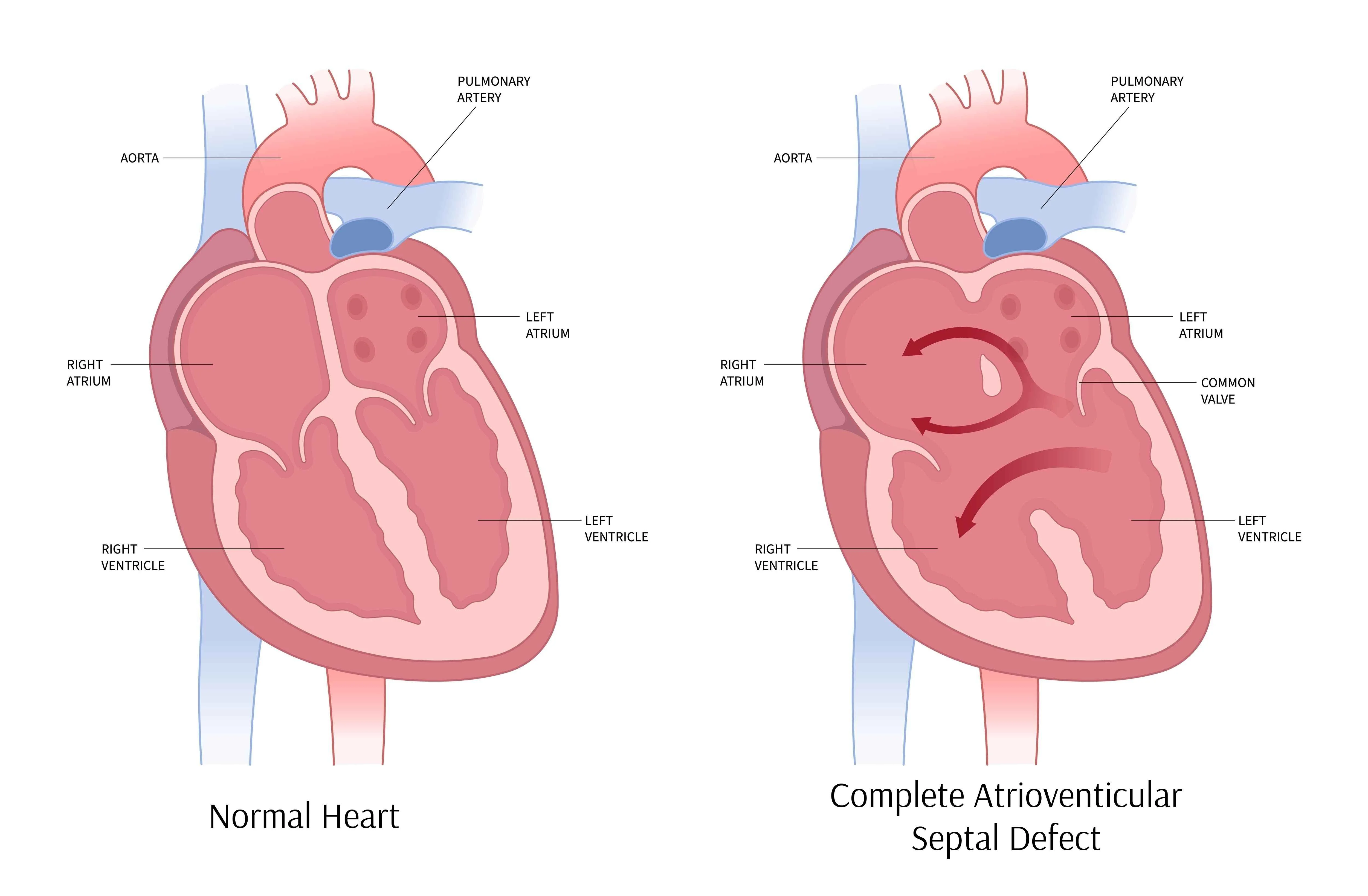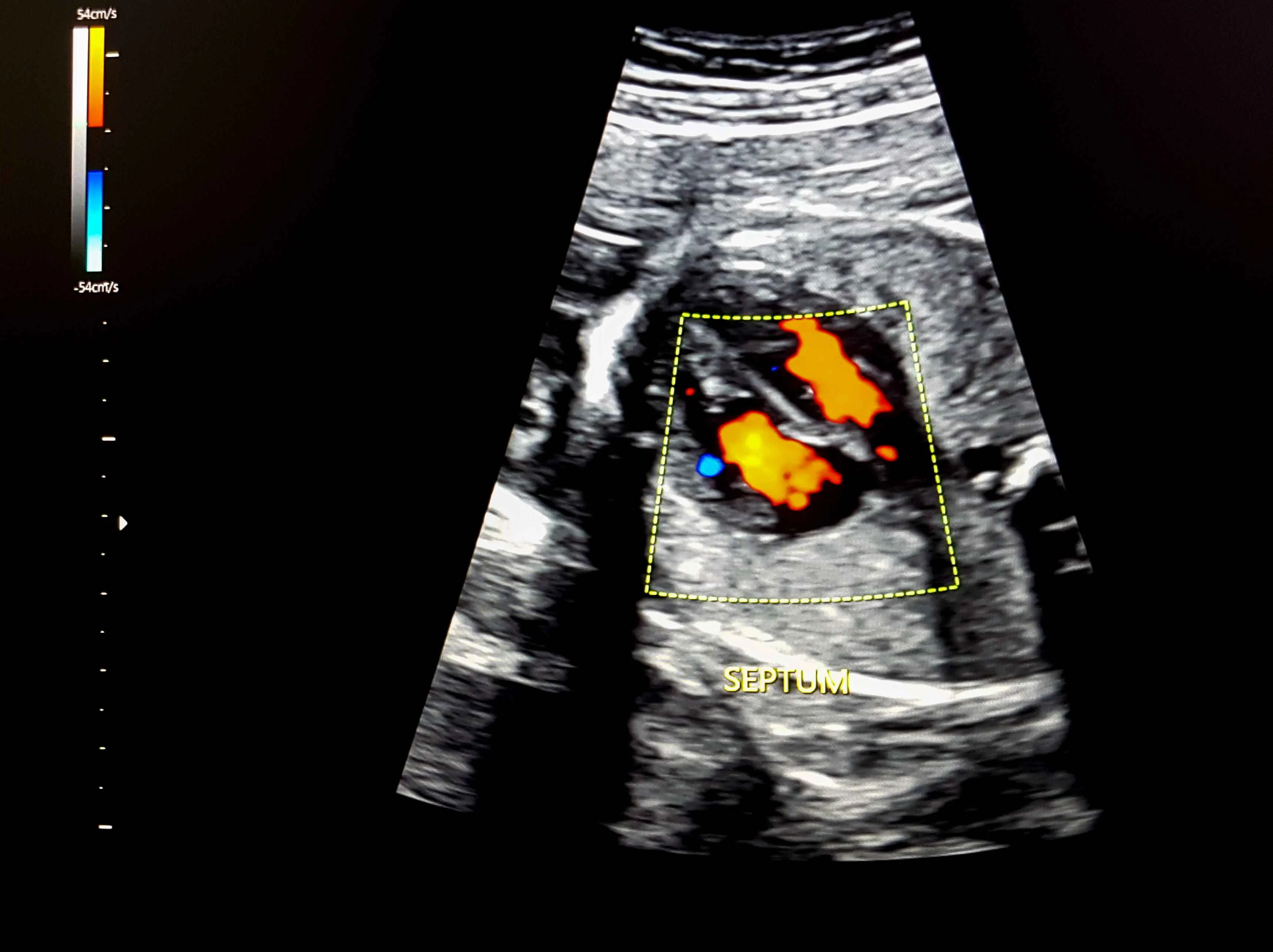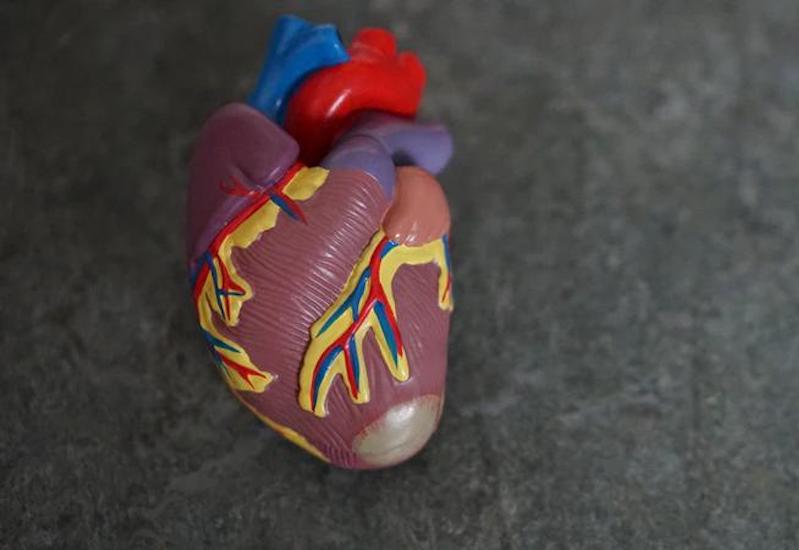Atrioventricular Septal Defect: Causes, Symptoms, Diagnosis, and Treatment


Atrioventricular Septal Defect (AVSD) also known as atrioventricular canal defect or endocardial cushion defect, is a severe congenital heart condition that affects the structure and function of the heart. Although it is often diagnosed in infancy or early childhood, advances in cardiology have aided many patients to live healthy lives with appropriate treatment.
What is Atrioventricular Septal Defect?
Atrioventricular Septal Defect is a congenital heart defect characterised by a hole between the heart's chambers and abnormalities in the valves that control blood flow between these chambers. This results in the mixing of oxygen-rich and oxygen-poor blood, causing the heart to work harder than usual.
AVSD primarily affects the heart's centre, where the walls separating the heart's chambers (the atria and ventricles) meet and where the atrioventricular valves (mitral and tricuspid) are located.
Expert Insight: Yale Medicine explains that in an atrioventricular septal defect, the heart valves don't form correctly, potentially leading to abnormal blood leakage.
Types of Atrioventricular Septal Defect


Complete AVSD
In this form, there is a large hole in the heart's centre, and a single standard atrioventricular valve instead of two separate valves. It is often associated with Down syndrome.
Partial (or Incomplete) AVSD
A smaller hole exists, usually in the atrial septum, and the two valves are present but abnormally formed. This form may not be diagnosed until later in childhood or even adulthood.
Transitional AVSD
Features of both partial and complete AVSDs are present, but the valves are more separate than in the full form.
Causes and Risk Factors
AVSDs occur during fetal development when the heart fails to form correctly. The exact cause is often unknown, but several risk factors have been identified:
Genetic Factors
- Strong association with Down syndrome (trisomy 21)
- Other chromosomal abnormalities (like trisomy 18 or 13)
- Family history of congenital heart defects
Maternal Health Factors
- Diabetes
- Rubella or other infections during pregnancy
- Substance use (alcohol, tobacco, certain medications)
Symptoms of Atrioventricular Septal Defect
Symptoms depend on the size and type of the defect and can vary significantly between individuals.
In Infants
- Rapid or laboured breathing
- Poor feeding and weight gain
- Bluish tint to the skin (cyanosis)
- Fatigue
- Frequent respiratory infections
In Older Children or Adults
- Shortness of breath
- Fatigue during physical activity
- Heart murmur
- Swelling in the legs or abdomen
How AVSD Affects the Heart
Due to the structural defects, blood flows abnormally within the heart, leading to increased blood volume in the lungs and overwork of the heart muscle. Over time, this can result in:
- Pulmonary hypertension
- Enlargement of the heart
- Valve leakage (regurgitation)
- Heart failure, if untreated
Diagnosing Atrioventricular Septal Defect


Prenatal Diagnosis
Fetal echocardiography can sometimes detect AVSD during routine ultrasounds, especially if the fetus is at risk (e.g., has Down syndrome).
Physical Exam
A doctor may detect a murmur or other abnormal heart sounds, prompting further evaluation.
Diagnostic Tests
- Echocardiogram: Primary tool for confirming AVSD
- Electrocardiogram (ECG): Evaluates heart rhythm
- Chest X-ray: May show heart enlargement or increased lung blood flow
- Cardiac MRI: Used for detailed anatomical visualisation
- Cardiac catheterisation: Assesses blood flow and pressure in heart chambers
Treatment of Atrioventricular Septal Defect
AVSD typically requires surgical correction. The timing and type of surgery depend on the severity of the defect and the child's health.
Medical Management (Pre-Surgery)
Medications may be used to control symptoms before surgery:
- Diuretics (to reduce fluid buildup)
- ACE inhibitors (to lower heart workload)
- Digoxin (to strengthen heart contractions)
Surgical Repair
Surgery is usually performed in the first 6-12 months of life for complete AVSD, and later for partial AVSD if symptoms are mild.
Surgical techniques include:
- Patching the septal defects (closing the holes)
- Repairing or replacing the AV valves
Treatment Insight: Cincinnati Children's Hospital explains that corrective heart surgery is necessary in all cases of AVSD
Post-Surgery Prognosis
- Most children recover well and can lead active lives
- Lifelong cardiology follow-up is necessary
- Some may need valve reoperation or management of arrhythmias later in life
Living with Atrioventricular Septal Defect
Ongoing Care
- Regular echocardiograms to monitor heart function
- ECGs to detect arrhythmias
- Endocarditis prevention (good dental hygiene is critical)
- Avoiding high-risk activities without medical clearance
Lifestyle and Support
- Nutrition: Balanced, heart-healthy diet
- Exercise: As recommended by a cardiologist
- Mental health: Support groups and counselling may help families cope
Special Considerations
- Pregnancy: Women with repaired AVSD can often have successful pregnancies with monitoring
- Down syndrome: Requires coordinated care across multiple specialities
Atrioventricular Septal Defect and Down Syndrome
Approximately 40% of children with Down syndrome have congenital heart defects, with AVSD being the most common. Early intervention and surgery significantly improve outcomes in this population.
Study Highlight: The National Down Syndrome Society states that Atrioventricular Septal Defect (AVSD) is the most frequently observed congenital heart condition in children with Down syndrome. This emphasises the strong correlation between the two conditions.
Complications if Left Untreated
Without treatment, AVSD can lead to:
- Irreversible pulmonary hypertension
- Heart failure
- Failure to thrive in infants
- Shortened lifespan
Advances in AVSD Treatment
Recent innovations include:
- Minimally invasive surgery for select patient
- 3D echocardiography and printing for surgical planning
- Improved postoperative care reduces complication rates
Expert Insights and Clinical Guidelines
According to the AHA and the American College of Cardiology:
- Surgical intervention is recommended for all complete AVSDs
- Patients should be managed by a multidisciplinary congenital heart disease team
- Early diagnosis improves long-term outcomes
Conclusion
Atrioventricular Septal Defect is a serious but treatable congenital heart condition. With early diagnosis, expert surgical care, and lifelong follow-up, most individuals with AVSD can thrive. Our heart clinic offers specialised care for congenital heart defects, guided by compassion, expertise, and the latest medical science.
If you or your child has been diagnosed with AVSD, we are here to help every step of the way. Schedule a consultation with our cardiologists today to learn more about your options and start your journey toward better heart health.
This write-up has been medically reviewed by Dr. Michael Ross MacDonald, a consultant cardiologist at The Harley Street Heart & Vascular Centre in Singapore, to ensure the accuracy and reliability of the information provided.


